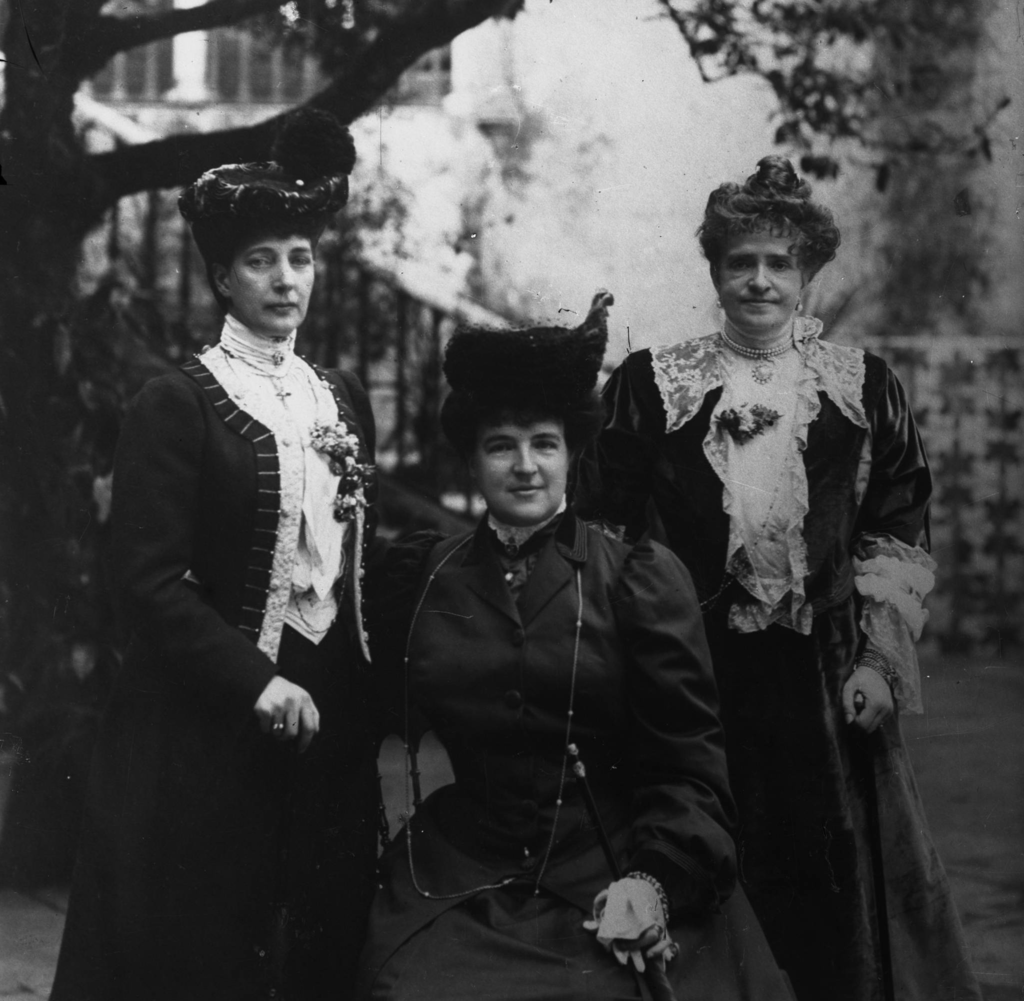by Scott Mehl © Unofficial Royalty 2013

Maria Pia of Savoy, Queen of Portugal; Credit – Wikipedia
Born at the Royal Palace of Turin in the Kingdom of Sardinia, now in Italy, on February 14, 1847, Princess Maria Pia of Savoy was the second daughter and youngest surviving child of Vittorio Emanuele II, King of Sardinia (later king of a united Italy) and Archduchess Adelheid of Austria. She was named in honor of her godfather Pope Pius IX. Maria Pia had seven siblings:
- Marie Clotilde (1843 – 1911) – married Prince Napoléon Joseph Bonaparte, had issue
- King Umberto I of Italy (1844 – 1900) – married Princess Margherita of Savoy, had issue
- Prince Amedeo, Duke of Aosta (1845 – 1890) – later King Amadeo I of Spain – married (1) Maria Vittoria dal Pozzo, had issue; (2) Princess Maria Letizia Bonaparte, had issue
- Prince Oddone, Duke of Montferrat (1846 – 1866) – unmarried
- Prince Carlo Alberto, Duke of Chablais (1851 – 1854) – died as a child
- Prince Vittorio Emanuele (born and died 1852) – died at birth
- Prince Vittorio Emanuele, Count of Geneva (born and died 1855) – died as an infant
After her mother died in 1855, Maria Pia was cared for almost exclusively by her governesses and her older sister. Maria Pia and her sister Maria Clotilde lived at Stupingi Palace, officially under the guardianship of their mother’s former lady-in-waiting, the stern Countess of Villa Maria. The two sisters saw their father intermittently, although he often sent the girls gifts and letters. Maria Pia was not much of an academic, but show interest and ability in drawing, dancing, and music.

The marriage of Maria Pia and Luis; source: Wikipedia
At the age of fifteen, Maria Pia was engaged to King Luis I of Portugal, the eldest son of Queen Maria II of Portugal and Prince Ferdinand of Saxe-Coburg and Gotha. The couple married by proxy on September 27, 1862. Maria Pia set out from Turin for Portugal two days later, arriving in Lisbon on October 5. The religious wedding was held at the Church of St Dominic the following day. Celebrations continued in Lisbon for the next three days.
After the wedding, the new couple settled at the Ajuda Palace, which Luis had refurbished for his new wife. During the early months at the palace, Maria Pia passed the time with music lessons, attendance at the opera, billiards, and sketching. Maria Pia and Luis had two sons:
- King Carlos I of Portugal (1863) – married Princess Amélie of Orléans, had issue
- Infante Alfonso, Duke of Porto (1865) – married Nevada Stoody Hayes, no issue

Queen Maria Pia with her sons Carlos and Alfonso – source: Wikipedia
Maria Pia was fond of her sons. She was known to walk the streets of Lisbon with them, sometimes accompanied by nannies and sometimes alone. She was also known to sit on the ground with her boys during playtime, uncommon for royal women at the time. The Countess of Daupiás gave the first pair of roller skates in Portugal to Maria Pia in 1873. Maria Pia would skate down the halls of Ajuda Palace with her children, screaming, “Make way!” to surprised servants and courtiers.
Maria Pia was infamous for her wild spending. She rarely wore the same dress twice and enjoyed hosting balls, parties, and masquerades. She tended to throw expensive glassware when her Savoy temper flared. In addition, she drove her servants crazy with her love of expensive cigars and her habit of throwing still-smoldering butts wherever she happened to be walking. Maria Pia’s excessive debts caused endless headaches for the Portuguese parliament. She insisted that her spending was justified for her work as a queen.
As much as she loved to splurge, Maria Pia was fond of charity work. In 1876, she raised funds to care for those displaced by floods in Portugal and for Brazilians hit by a drought and famine. Maria Pia founded a children’s hospital in Porto, Portugal in 1882. Upon hearing of a fire that destroyed much of Porto in 1888, Maria Pia visited the homes of those affected, distributing food, clothing, and funds.
King Luis I died in October 1889. Although he and Maria Pia were fond of one another, Luis’ many affairs caused a rift with his wife that never subsided. Maria Pia continued to devote herself to charity work and served as regent for her son Carlos when he was abroad.

Dowager Queen Maria Pia (right) with Queen Alexandra of the United Kingdom and Queen Amélia of Portugal, 1905. source: Wikipedia
The early 1900s were a difficult time for Maria Pia. Her brother King Umberto I of Italy was assassinated in 1900. Following the assassination of her son King Carlos I of Portugal and his son Crown Prince Luis Filipe in 1908, and the deposing of her grandson King Manuel II of Portugal two years later, Maria Pia fell into a deep depression. She returned to her native Italy soon after, where she died on July 5, 1911, at the Royal Chateau at Stupingi Palace in Turin, Italy. She is buried at the Basilica of Superga in Turin, Italy, making her one of just a few Portuguese consorts not to be buried in the Monastery of São Vicente de Fora in Lisbon, Portugal in Lisbon.
This article is the intellectual property of Unofficial Royalty and is NOT TO BE COPIED, EDITED, OR POSTED IN ANY FORM ON ANOTHER WEBSITE under any circumstances. It is permissible to use a link that directs to Unofficial Royalty.
Portugal Resources at Unofficial Royalty








